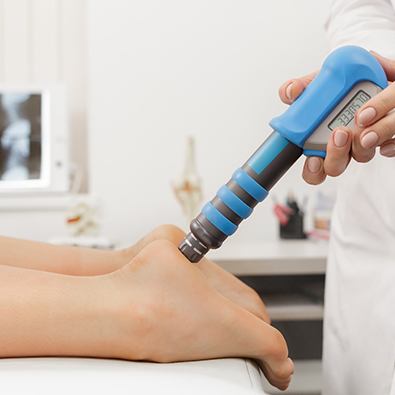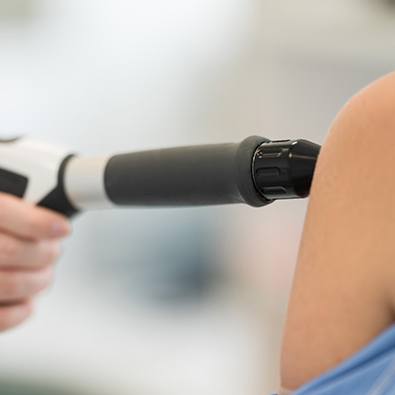
Fax: (860) 430-9693
Glastonbury, CT 06033

Extracorporeal Shock Wave Therapy sounds like something from a sci-fi novel written in the 1950s, but it’s actually a very current, non-surgical procedure Dr. Tortland uses to treat tendinitis, sprains, strains, muscle injuries, and other sources of chronic pain. It relies on the rapid application of high-intensity pulses of mechanical energy to break up scar tissue, enhance blood flow, and accelerate tissue healing.

Over the years, Dr. Tortland has used ESWT to successfully treat:

A single ESWT treatment takes about 15 minutes in total. A small device is placed against the problem area, and it creates directed mechanical energy that applies and reapplies pressure in a very concentrated spot, almost like a small massage set on fast forward. The patient will only feel a quick tapping sensation.
Some patients experience immediate relief after a single session, but for most, six or more treatments are necessary to achieve the highest quality result. These are recommended to occur about one to two times a week. One of the other great things about ESWT is that it can be easily combined with other treatments we offer to accelerate its effects.

Do you suffer from chronic pain? If so, you know from experience how much it can affect your overall quality of life. Experiencing pain every day is not a fun way to live, especially when the discomfort is avoidable. At Valley Sports Physicians & Orthopedic Medicine, we offer extracorporeal shockwave therapy as a state-of-the-art solution to this painful problem. To learn more about this treatment, we encourage you to review our answers to some frequently asked questions below!
Extracorporeal shockwave therapy has an incredible success rate that can be as effective (or more effective) than other methods, like surgery or pharmaceuticals. One significant advantage is that it’s effective without the risks, complications, or long recovery times.
If you’re on the fence about this treatment, here are a few benefits to consider:
Before moving forward with the process, you need to have a consultation to determine whether or not you’re suitable for this treatment. You’ll be happy to know that most people are viable candidates for extracorporeal shockwave therapy! As long as you’re in good health and are not suffering from any existing conditions that could be affected by shockwave treatment (i.e., nerve or circulation disorders, metabolic bone conditions, or bone disorders), then you’re all set.
There is no downtime with this treatment. Most patients experience beneficial effects after only one or two treatments. You’ll likely feel immediate pain relief afterward! As mentioned earlier, the technology has a 91% success rate as per clinical studies. This non-surgical therapy will eliminate your pain, restore mobility, and improve your overall quality of life.
During this treatment, your body will be forced to create new tissue cells in the damaged area. You should expect gradual healing to occur over the next few days, weeks, or months. Although it’s not very common, you may have mild soreness or bruising after therapy. However, most patients will have noticeable to significant improvement by the thirteenth week.
It’s important to note that a second treatment may be necessary after sixteen weeks in about 20% of patients. Since it takes time to create the injury, it will take some time for your body to fully heal. But don’t worry – you will not need to plan lengthy time off from work or your life for painful post-procedure recovery.